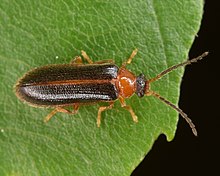
The soldier beetles (Cantharidae) are relatively soft-bodied, straight-sided beetles. They are cosmopolitan in distribution. One of the first described species has a color pattern reminiscent of the red coats of early British soldiers, hence the common name. They are also known commonly as leatherwings because of their soft elytra.

The beetle family Phengodidae is known also as glowworm beetles, whose larvae are known as glowworms. The females and larvae have bioluminescent organs. They occur throughout the New World from extreme southern Canada to Chile. The recently recognized members of the Phengodidae, the Cydistinae, are found in Western Asia. The family Rhagophthalmidae, an Old World group, used to be included in the Phengodidae.

The Elateroidea are a large superfamily of beetles. It contains the familiar click beetles, fireflies, and soldier beetles and their relatives. It consists of about 25,000 species.
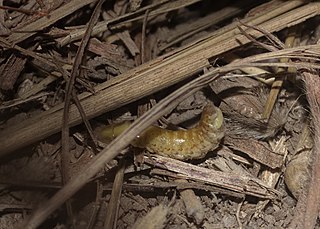
The Rhagophthalmidae are a family of beetles within the superfamily Elateroidea. Members of this beetle family have bioluminescent organs on the larvae, and sometimes adults, and are closely related to the Phengodidae, though historically they have been often treated as a subfamily of Lampyridae, or as related to that family. Some recent evidence suggested that they were the sister group to the Phengodidae, and somewhat distantly related to Lampyridae, whose sister taxon was Cantharidae, but more reliable genome-based phylogenetics placed as the sister group to the Lampyridae.

The Luciolinae are among the largest subfamilies of fireflies (Lampyridae). They seem to be all "flashing" fireflies. They are a diverse lineage, spreading throughout the warm parts of Eurasia into temperate Europe and East Asia and south to the Australian region.

The Trictenotomidae are a small family of beetles in the superfamily Tenebrionoidea, containing fifteen species in two genera. Most species are found in the Oriental realm where they live in montane forest habitats. The family is considered, based on larval characters as well as sequence-based studies, to be closely related to the Salpingidae.
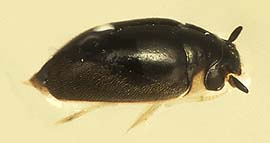
Spanglerogyrus albiventris is a species of beetle in the family Gyrinidae, the only species in the genus Spanglerogyrus. It is native to North America, and was described in 1979 from specimens found in southern Alabama. It is the only living member of the subfamily Spanglerogyrinae, the earliest diverging extant lineage of the gyrinids which also includes Angarogyrus from the Jurassic and Cretaceous of Asia.
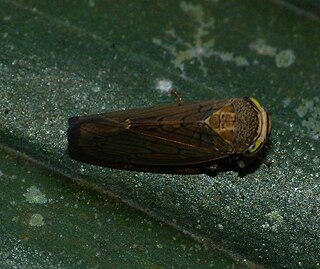
Kutara is a leafhopper genus belonging to the subfamily Deltocephalinae. It was previously assigned to the Selenocephalinae subfamily.
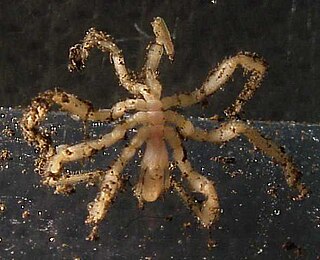
Ammotheidae is the most diversified group of the class Pycnogonida, with 297 species described in more than 20 genera, of which only Nymphopsis and Sericosura were found to be monophyletic. Despite its internal taxonomic uncertainty, studies on 18S rRNA supports its monophyly, and the subdivision on Achelinae and Ammotheinae subfamilies.

Pachybolidae, is a family of round-backed millipedes of the order Spirobolida. The family includes 49 different genera. Two subfamilies recognized.
Mycotretus is a genus of pleasing fungus beetles in the family Erotylidae. Mycotretus is the largest genus in the family Erotylidae with at least 204 different species:
The Mastinocerinae are a subfamily of phengodid beetles (Phengodidae). It contains mostly Central and South American species. They are also known as "railroad worms".
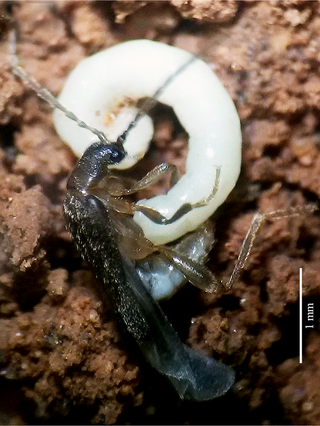
Jurasaidae is a family of elateroid beetles known from around a half-dozen species in two genera found the Brazilian Atlantic rainforest including drier transitional areas bordering the Caatinga. All known species have neotenic larva-like females and normal males, similar to some other elateroids. They occur in the soil horizon immediately under leaf litter, with the larvae likely being fungivorous, consuming the fluids of fungal hyphae.

The Hierodulinae are a subfamily of praying mantids, originally used by Brunner von Wattenwyl. It was restored as part of a major revision of mantid taxonomy, and now contains genera previously placed elsewhere in the family Mantidae.
Arrugada is a genus of leafhoppers in the subfamily Deltocephalinae. There are currently four described species of Arrugada and they are all endemic to Bolivia and Peru. The genus was formerly considered to be within its own separate subfamily within Cicadellidae; however, it is now recognized to be in its own tribe, Arrugadini, within the subfamily Deltocephalinae.
Chiasmini is a tribe of leafhoppers in the subfamily Deltocephalinae. Chiasmini contains 21 genera and over 300 species. Some species of Chiasmini in the genus Nephotettix are agricultural pests and transmit rice Tungrovirus in southeast Asia.
Cicadulini is a tribe of leafhoppers in the subfamily Deltocephalinae. There are 15 genera and over 120 species in Cicadulini.

Telegeusinae is a small subfamily of beetles in the family Omethidae recognizable by enlarged palpi found in males. Though relatively rare, males are sometimes found in large numbers in black light traps. Females are not known in this group, but it is theorized that females are larviform as found in many closely related taxa.

Eluma is a genus of woodlice in the family Armadillidiidae. The members of this genus are native to the Iberian Peninsula, Morocco, the Atlantic islands of the Azores, Canaries and Madeira, and from the west of France to the British Isles.
